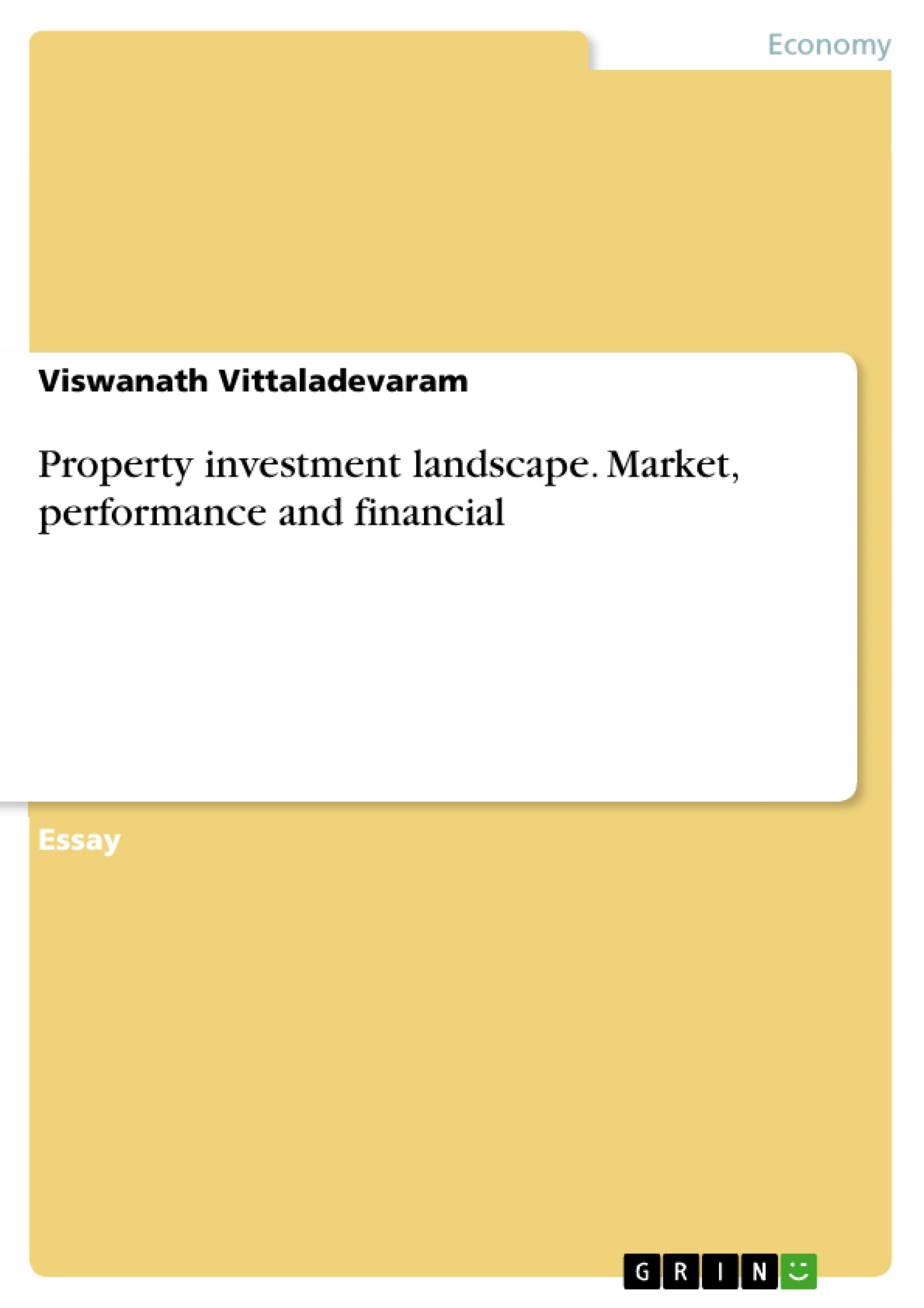This work is about the property investment landscape. At a central level, interest in property can be ordered as either immediate or roundabout. Coordinate venture includes the genuine buy of land either independently or through a syndicate. It can fall over all property areas with private property having a tendency to be the favoured alternative because of its availability and the way that it is for the most part more affordable than different divisions.
While the immediate obtaining of land considers improvement and upgrade to the property, it comes with a few inadequacies. These disadvantages can incorporate illiquidity and the absence of advantage valuation unless directed. Then again financial specialists can seek after backhanded venture, which takes into account the presentation of properties for the most part considered excessively costly for the normal individual.
Inhaltsverzeichnis (Table of Contents)
- Property Investment Landscape
- Office
- Retail
- Industrial
- Other Fragments
- Property Investment Market and Performance
- Comparison of Performance-Total Returns
Zielsetzung und Themenschwerpunkte (Objectives and Key Themes)
This text aims to provide an overview of the Australian property investment landscape, examining different property sectors and their performance, while also exploring the factors influencing investment decisions and market trends. The text is particularly relevant to investors seeking to understand the potential returns and risks associated with different property segments.
- Different property investment strategies (direct and indirect)
- Characteristics and performance of key property segments (office, retail, industrial)
- Influence of macroeconomic and local factors on property investment returns
- Comparative analysis of property market performance and total returns
- Insights into investment opportunities and potential risks in the Australian property market
Zusammenfassung der Kapitel (Chapter Summaries)
Property Investment Landscape
This chapter introduces different approaches to property investment, including direct ownership and investment through trusts. It outlines the key characteristics and advantages of each approach, emphasizing the importance of considering individual property segments for informed investment decisions.
Office
This section delves into the office property market, highlighting its role as a "leader" in the investment landscape due to its high profile and quality tenants. It examines the factors influencing rents and valuations, including macroeconomic conditions and local market dynamics. The chapter also emphasizes the importance of considering factors such as building aesthetics, common light, and proximity to other workplaces when making an investment decision in this sector.
Retail
This section explores the diverse nature of the retail property segment, encompassing single-occupant properties to large shopping malls. It underscores the significance of a "grapple occupant" in attracting customers and emphasizes the impact of economic conditions on retail property performance. The chapter also discusses the importance of factors like location, foot traffic, and local demographics when assessing retail investment opportunities.
Industrial
This section analyzes the industrial property market, encompassing warehouses, manufacturing facilities, distribution centers, and R&D spaces. It highlights key factors to consider when investing in industrial properties, including site access for trucks, warehouse height and width, and the inclusion of staff amenities and office space. The chapter also examines the inherent volatility of industrial property returns, particularly in relation to broader economic drivers.
Other Fragments
This section briefly discusses other property segments that contribute to the overall investment landscape, including residential, hospitality, senior living, self-storage, and healthcare properties.
Property Investment Market and Performance
This section provides an overview of the current state of the Australian property investment market and outlines key factors to consider when evaluating investment opportunities. It focuses on the performance of different property segments, particularly in terms of total returns, and discusses the potential implications for investors.
Comparison of Performance-Total Returns
This section delves into the analysis of total returns across different property segments, comparing their performance and highlighting the importance of considering segment-specific factors. It provides a clear picture of the overall market trend and highlights the importance of a comprehensive understanding of the market when making investment decisions.
Schlüsselwörter (Keywords)
The main keywords and focus topics of the text include property investment, direct investment, indirect investment, property segments, office, retail, industrial, total returns, market performance, macroeconomic factors, local factors, investment opportunities, and risks. These keywords encapsulate the core concepts explored in the text, providing a comprehensive overview of the Australian property investment landscape and the factors that influence investment decisions.
- Quote paper
- Viswanath Vittaladevaram (Author), 2020, Property investment landscape. Market, performance and financial, Munich, GRIN Verlag, https://www.grin.com/document/1032012



